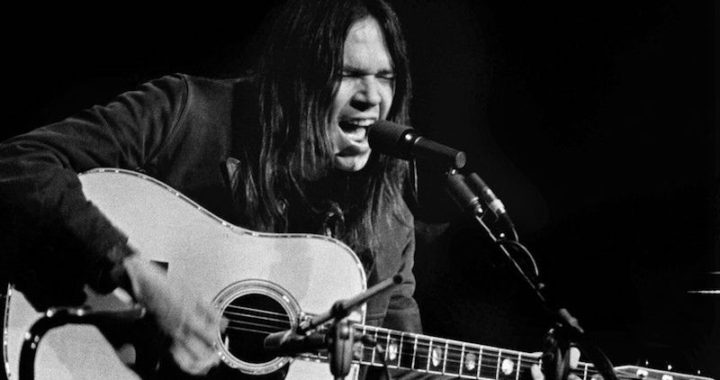When writing a song, it seems logical to assume that it will be either in a major or minor key, and you simply have to choose which one. But there is another option, which is to allow the song to start minor, switch quickly to major, then back to minor, and so on.
You’d be amazed how useful a simple, basic I-IV-V-I progression can be. But if you’re looking for more — for progressions that are more on the creative side — you need “Creative Chord Progressions”, being offered free right now with your purchase of “The Essential Secrets of Songwriting” 10-eBook Bundle.
To give you an idea of what I’m talking about, give Neil Young’s classic tune, “Heart of Gold” a listen. It starts on a minor chord (Em), but the majority of the progression actually sits in G major:
Em C D G
But the fact that the first chord is minor makes us feel minor, and it feels musically surprising to notice G major moving in right away. In fact, the entire progression can be seen in G major:
vi IV V I
But as I say, placing the vi-chord at the start makes us feel that strong sense of minor. In any case, what we wind up with is a song that keeps fluctuating quickly back and forth between minor and major.
Why is this quick switching back and forth between minor and major so attractive? Mainly because of their relationship. In music theory terms, E minor is the relative minor of G major. (We use the term “relative” to mean that both E minor and G major use the same key signature.)
And because they have this kind of relationship, it’s easy to move back and forth between them. And since audiences love hearing contrast in music, quick, easy switches from minor to major, and from major to minor, fit the bill.
Chord Progression Examples
If you want some examples of chord progressions that move quickly between major and relative minor, check out the following. The first lot start on major, and the second group of progressions start on minor.
They’ll work in any key signature, time signature, and musical style.
From Major to Minor
- C F Am Em Am G (I IV vi iii vi V)
- C Am F C (I vi IV I)
- C G/B Am G Am Em F Am (I V6 vi V vi iii IV vi)
- C G F E7 Am E7 Am G (I V IV V7/vi vi V7/vi V)
- C C7/Bb F/A E7/G# Am Em F Am G (I V4-2/IV IV6 V4-3/vi vi iii IV vi V)
From Minor to Major
- Am G F C (vi V IV I)
- Am C F G (vi I IV V)
- Am Em F G (vi iii IV V)
- Am Dm F G (vi ii IV V)
- Am Em F C Dm G C G/B (vi iii IV I ii V I V6)
As you can see, I’ve used major-key roman numerals even with the minor progressions, with the thought in mind that even though they start on a minor chord, the bulk of each set of changes is actually major. With each progression you get a quick change of direction, sometimes (as in the case of “Heart of Gold”) after only one chord.
The end of each progression is written so that it will repeat back to the beginning easily. So you’ll notice that the switching back and forth will be easy for your audience to process and understand.
Any of these progressions would work as verse or chorus, and feel free to experiment. All of the examples above use the relative major/minor relationship, but you can experiment by switching from minor based on ii, to major I, something like: Dm Am G C
 Written by Gary Ewer. Follow on Twitter.
Written by Gary Ewer. Follow on Twitter.
“Essential Chord Progressions” give you hundreds of progressions you can use as is, or modify to suit the songs you’re working on. If all you need are some chords to get you going, check out this ebook. It’s part of “The Essential Secrets of Songwriting” 10-eBook Bundle
give you hundreds of progressions you can use as is, or modify to suit the songs you’re working on. If all you need are some chords to get you going, check out this ebook. It’s part of “The Essential Secrets of Songwriting” 10-eBook Bundle











Great post! It’s nice to come across these types of posts from time to time to get the creative juices flowing in unique ways. Thanks for putting it together.
Thanks CJ – Glad you’ve enjoyed the post!
-G